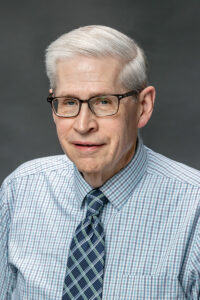Waste not, want not — the high-tech way
Drones and artificial intelligence help UND save energy, cut costs and plan for the future

North Dakota has become synonymous with developing and testing uncrewed aircraft systems (UAS), and now this technology is being put to use on the University of North Dakota campus to help reduce energy costs and assist with infrastructure repairs and improvements.
“It’s a great opportunity to use our campus as a research tool for students and faculty at UND,” said Brian Larson, director for construction management in the facilities management office. “It provides a real-world opportunity to put new technology and some new ideas into action.”
Last year, Tau Drones – a spinoff company created by SkySkopes founder and partner Matt Dunlevy – flew missions on the west side of campus, using a drone equipped with a thermal camera. The drone was flown by Jordan Krueger with the UND Research Institute for Autonomous Studies (RIAS) who was assisted by Karthik Balaji, product development lead and technical manager with Tau Drones.
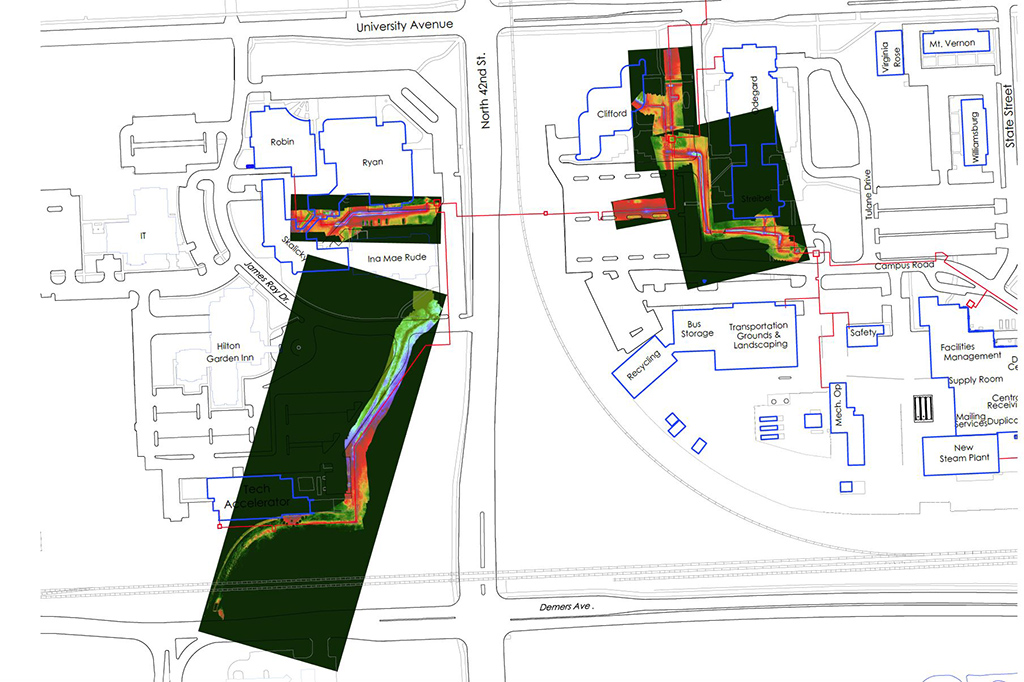
Thermal images from the drone identified heat loss, which shows up as bright red spots, from several buildings and underground steam condensate pipes. The data collected was analyzed with an artificial intelligence (AI) program developed by UND and Tau Drones.
“UND Facilities approached us to fly around the buildings and use our artificial intelligence to show any anomalies,” Dunlevy said. “It’s not just to flag the problems, but also to quantify the level of escaping heat and make recommendations to prevent further losses.”
Timing is everything
Larson, who previously worked with Dunlevy, said the project tied in well with UND’s needs and plans.
“Tau Drones had a new research business venture to capture thermographic images with their drone technology,” he noted. “They provided us with data showing where we were having energy loss.
“It was in line with a number of projects we’ve been working on to improve our energy efficiency,” Larson added. “It really came together at the right time.”

The AI program was originally developed by Prakash Ranganathan, associate professor of electrical engineering in the College of Engineering & Mines, in partnership with Dunlevy as part of the former state-funded Research North Dakota program.
Tau Drones produced reports tor UND Facilities showing where heat loss was occurring in three Aerospace Science buildings, the Tech Accelerator building and condensate pipes buried near those facilities. The thermal imaging data gathered was analyzed by Balaji using the AI program to show not only where energy was being lost, but also how much it cost the University in terms of electricity and natural gas expenses.
Getting steamed
The drone was also used to inspect areas around the buildings for suspected leaks from underground steam condensate pipes. Condensate – hot water condensed from the steam used to heat UND’s facilities – is returned in the pipes to the University’s steam plant for reuse.
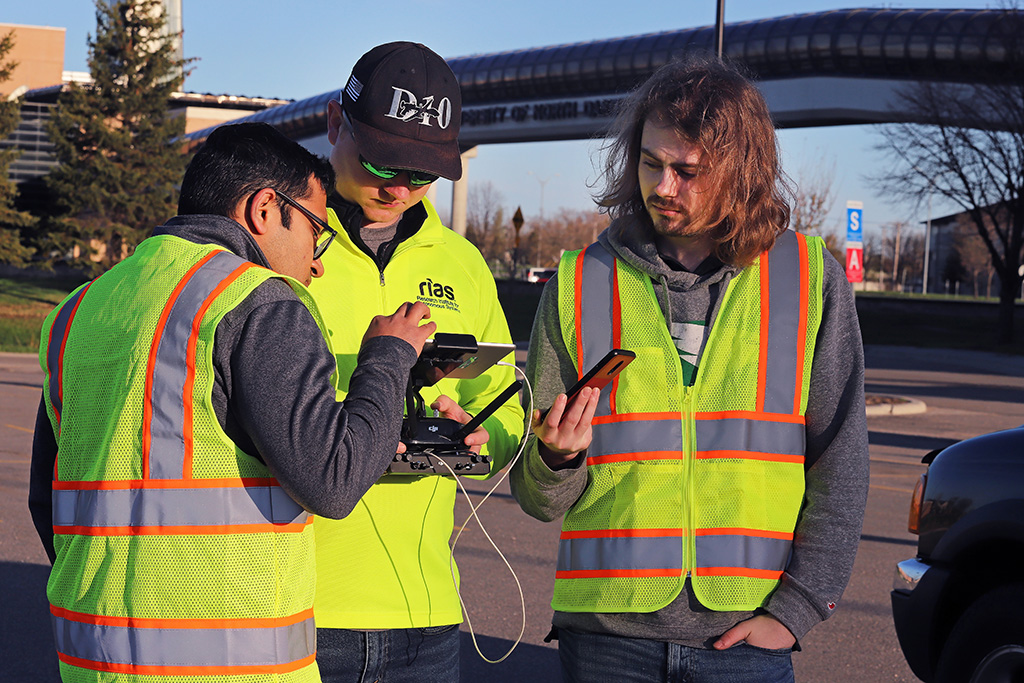
“When you lose condensate, you lose energy because it’s water that’s already been heated,” explained Michael Nord, UND’s assistant director for sustainability and energy. “When we lose condensate because of a leak, we have to take fresh cold water from the city and heat it back up to make steam.”
Corey Shock, assistant director for mechanical, electrical and plumbing, said in most cases, the issues where heat loss is occurring are known. It becomes a question of determining the significance of the problem and how far it extends.
For example, all the condensate pipe on UND’s campus was replaced following the flood of 1997. That fiberglass pipe has a life of 25 years and will be replaced by piping with a 50-year lifespan. In addition to the heat loss, leaking condensate can damage landscaping and other infrastructure, such as sprinkler systems, roads and parking lots.
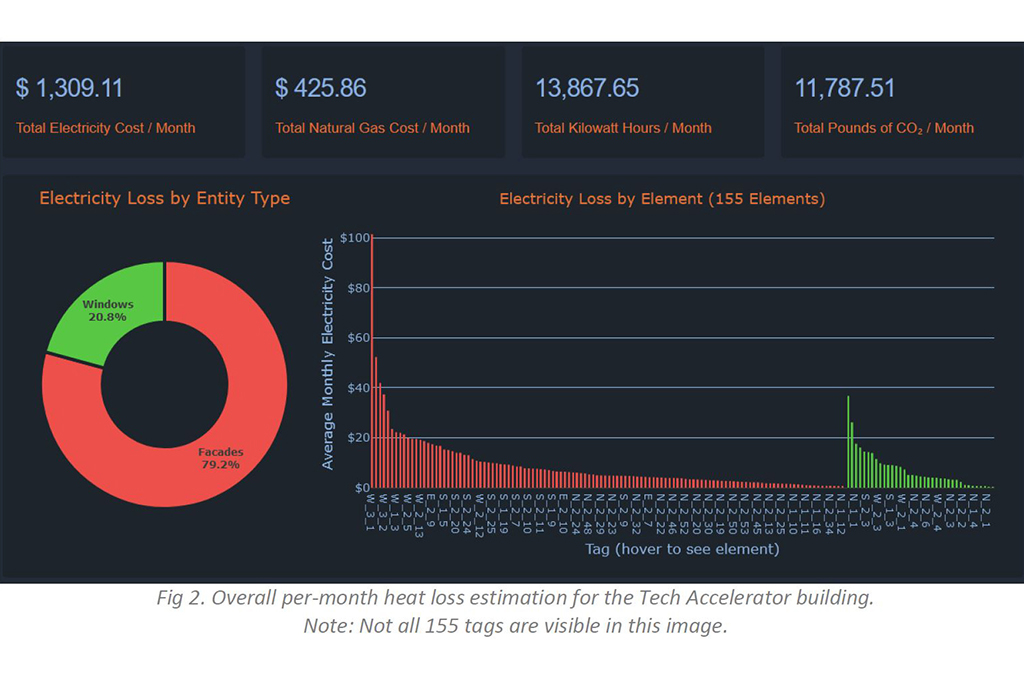
The information from Tau Drones assists Facilities in its planning process.
“It lets us be proactive about replacing pipe as it’s slowly starting to leak underground, rather than waiting for a large mess to bubble up to the surface,” Larson said. “The quicker we can get to it and make the repair or plan a larger investment in upgrading that material, the more effective and cost-efficient we are.”
With buildings, Larson said it’s not always practical to fix an area where energy is being lost, but knowing what works and what doesn’t helps guide decisions on future construction.
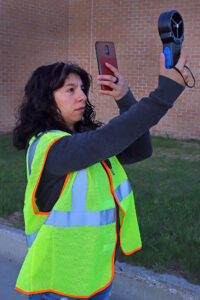
“From our perspective, we know that the cost to build a building is very small compared to the cost to operate the building over its lifespan,” he explained. “We need to build these buildings properly and lower our long-term energy costs.
“Learning from past mistakes – getting the right windows, the right doors, the right cladding – that’s really going to help us in the future,” he continued. “We don’t want to see those bright red spots where the heat is escaping. It’s challenging to open a building back up to correct those areas. The best thing to do is to do it right the first time.”
A living laboratory
Nord said UND recognizes the need to reduce energy use to lower operating costs, and the University is fortunate to have technologies available to aid in that effort.
“We have a living laboratory here and anytime Facilities can use it for students to learn, we also learn,” he said. “We learn from the new creative minds coming in and the new ventures like SkySkopes or Tau Drones. It helps the community and the state of North Dakota.”
Dunlevy credited North Dakota’s UAS ecosystem with the opportunity to move the technology out of the lab and into the realm of commercialization.
“This is something not out of the ordinary with the robust UAS ecosystem we have in the state, and UND is at the heart of it,” he said. “It’s a good thing that UND and people of Grand Forks had the foresight to partner with each other in a way that was beneficial to the UAS mission at the Grand Forks Air Force Base. That vision has been realized. It’s continuing to be successful.”
